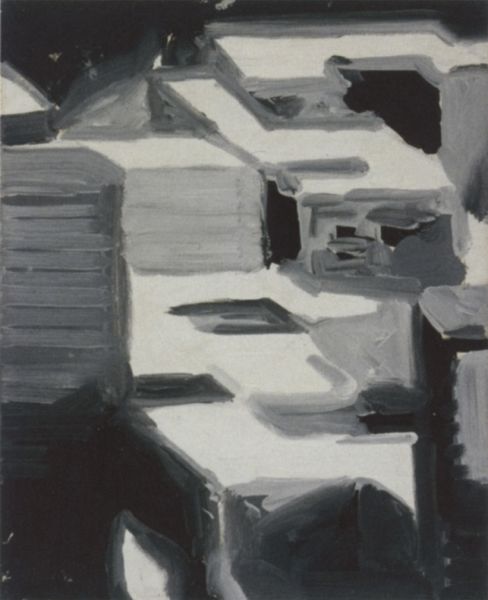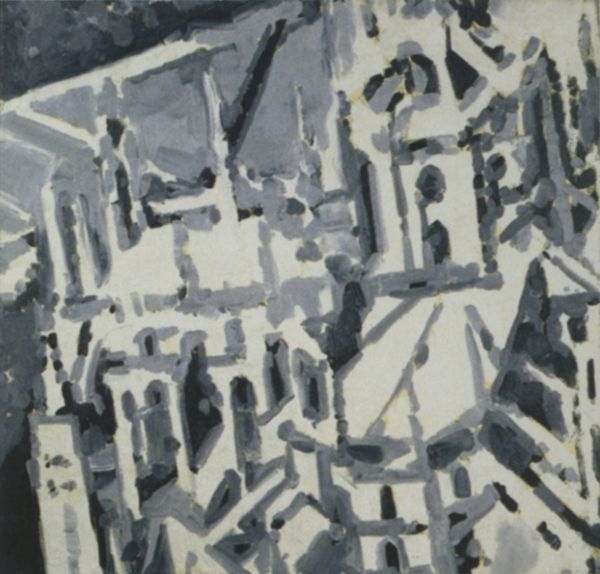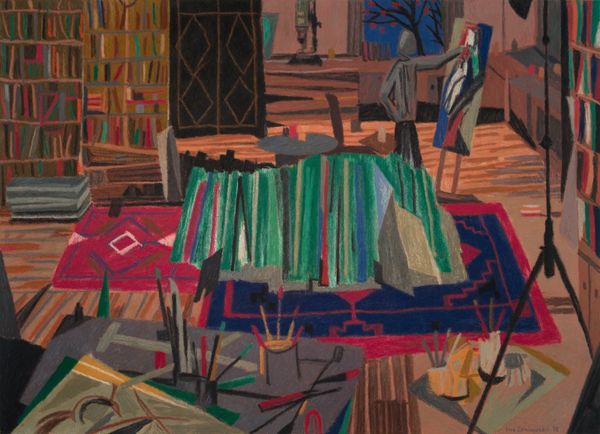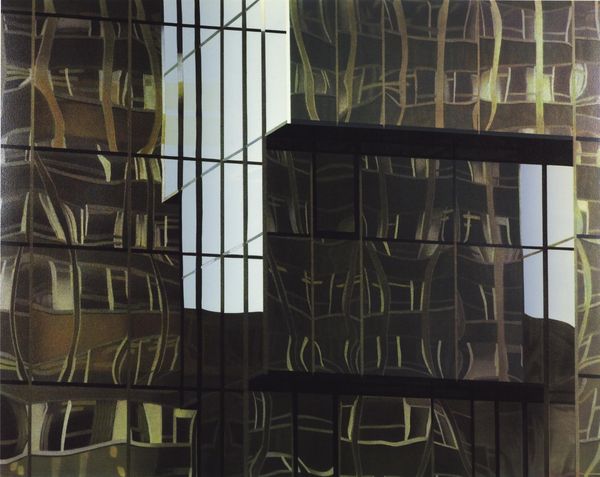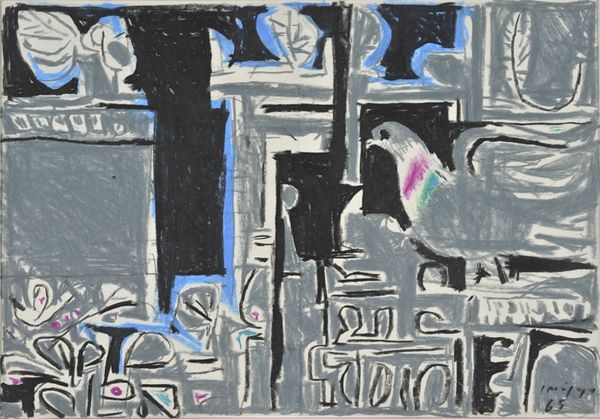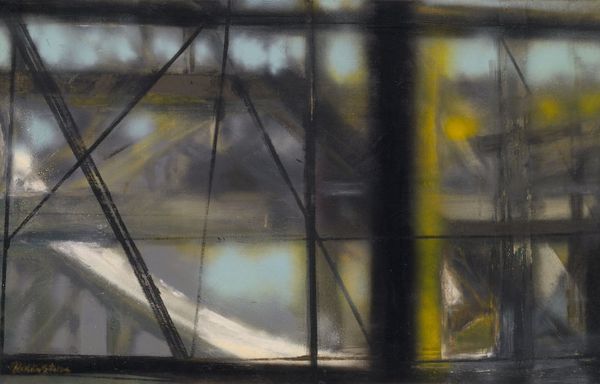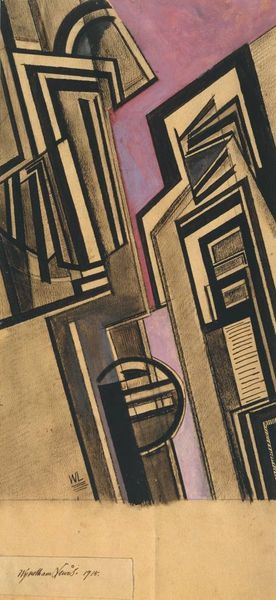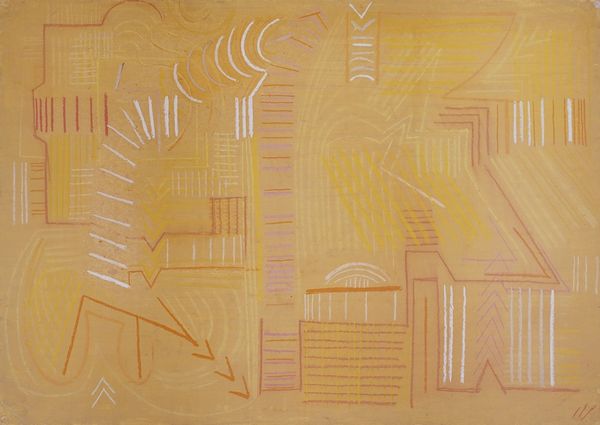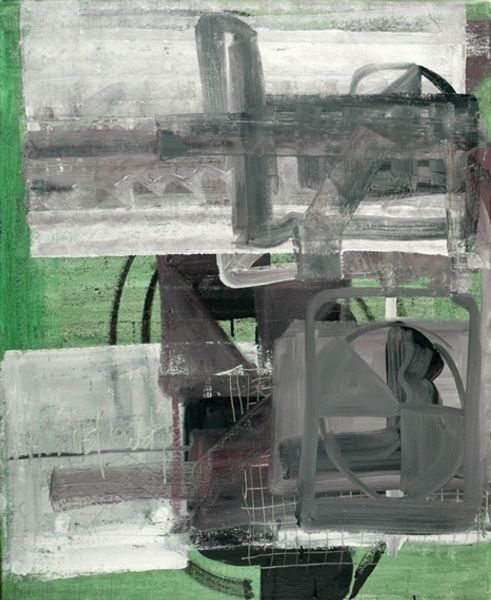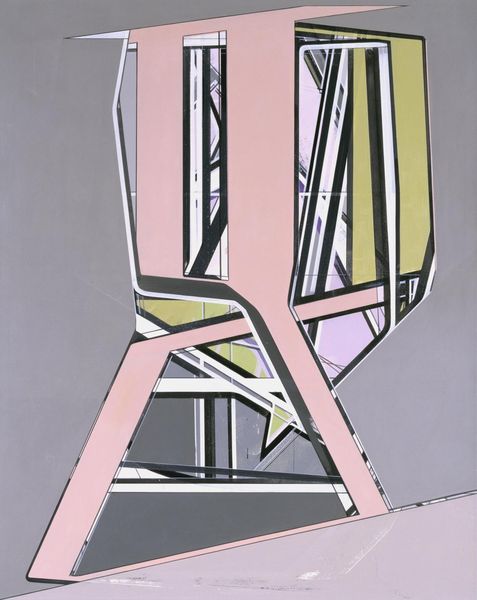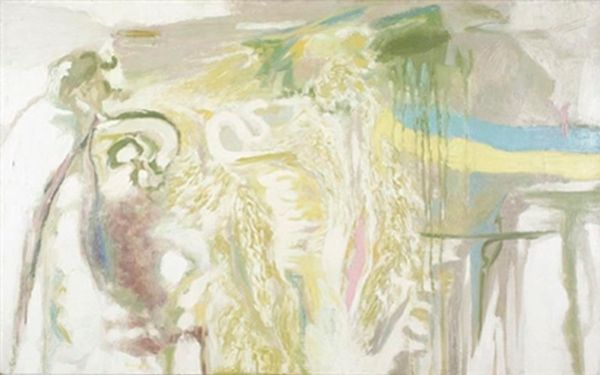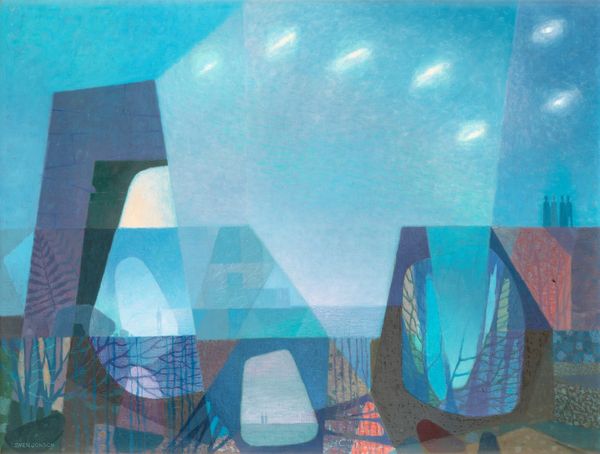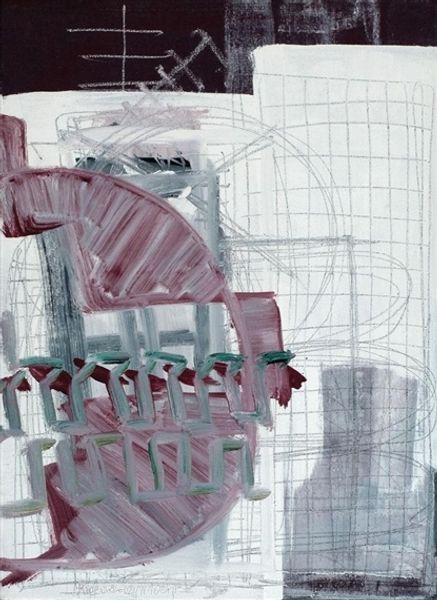
Dimensions: support: 891 x 1163 x 22 mm frame: 1176 x 1443 x 113 mm
Copyright: © ADAGP, Paris and DACS, London 2014 | CC-BY-NC-ND 4.0 DEED, Photo: Tate
Editor: Here we have "The Billiard Table" by Georges Braque, currently housed at the Tate. It feels like a puzzle of shapes and forms. What symbols or deeper meanings might Braque be exploring here? Curator: The billiard table itself is potent. Think of the cultural weight of the game: leisure, strategy, social interaction, even gambling. These are potent symbols. Editor: I see. So, it's not just a table, but a representation of a certain lifestyle. Curator: Precisely. And consider how Braque uses fractured forms. What could this fragmentation symbolize about modern life? Editor: Perhaps a sense of disorientation or shifting perspectives? Curator: Yes! The visual language reflects the psychological landscape of a rapidly changing world. It certainly shifts your perspective. Editor: That’s a lot to think about. I will never look at a billiard table the same way again. Curator: Indeed, and consider how cultural memory informs our understanding of even the simplest image. Fascinating, isn't it?
Comments
tate 8 months ago
⋮
http://www.tate.org.uk/art/artworks/braque-the-billiard-table-t07992
Join the conversation
Join millions of artists and users on Artera today and experience the ultimate creative platform.
tate 8 months ago
⋮
Opie’s mother, Mary Tonkin, was 48 when he was born in 1761. She had married Edward Opie (or Oppy) in 1747. It was his second marriage. Although contemporaries stressed Opie’s ‘lowly’ origins, his mother’s family were landowners. Their property included mines and the harbour at Trevaunance Cove, Cornwall. Mary Opie served as the model for her son’s painting of The School Mistress, on display nearby. Gallery label, October 2019
